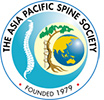Physical therapy is one of the foremost necessary treatment modes of recovery for back pain. A referral to physiotherapy sometimes is created by your spine surgeon. A physical therapist is a well-trained, skilled health care professional who facilitates improving movement and manages the pain by safe stretching, conditioning, and strengthening exercise techniques. Patients are guided concerning the fundamental anatomy of the body and their mechanism of action. They are also instructed about the varied exercise regimens to extend the activity level thereby strengthening the muscles. Most patients manage low back pain and associated symptoms with therapy and medications without surgical intervention.
The different modalities of physical therapy include hot or cold packs, ultrasound, transcutaneous electrical nerve stimulation, spinal manipulation, diathermy, massage, and aqua therapy. These treatment options may be indicated depending on the type and severity of pain.
People susceptible to back pain should avoid activities that exert excessive stress on the lower back or twisting movements like in sports activities and weight lifting. The two different forms of physical therapy include:
- Active physical therapy includes physical exercise or stretching, whereby the patient uses their own force to reduce back pain.
- Passive physical therapy is where the modalities are done to the patient by the therapist.
A physical therapist tailors a particular exercise program per the individual necessities and goals.
Physical therapy involves the management of musculoskeletal dysfunction, injury or disease. The musculoskeletal system is composed of muscles, bones and nerves that help in movement. The common conditions that may be managed by general physical therapy include:
- Arthritis
- Back / neck pain
- Carpel tunnel syndrome
- Fractures
- Headaches
- Joint pain
- Post-operative rehabilitation
- Sports related injuries
- Sprains/strains
- Temporomandibular joint dysfunction
- Trauma/serious injuries
What are the expectations from physical therapy?
Your first visit will be an initial evaluation. Your therapist will ask history about the present problem followed by a physical examination. You may be asked to walk around or asked to sit or stand to measure the movements (range of motion) and strength. Be prepared to discuss your symptoms and what factors worsen or diminish your pain levels as this helps the therapist to determine the nature of your problem and to determine your special care and focus.
Initial evaluation also includes postural assessment which helps to determine a specific treatment plan for the patient. Make sure to ask questions of your therapist if you are unsure of any of the instructions for your particular treatment plan.
Arthritis/ Prehab program for total joints replacemen
In such programs multiple problems such as loss of motion, strength deficits, pain, joint protection, and even weight reduction are managed to decrease arthritic pain. Physical therapy may include exercise, manual therapy/ massage techniques, joint protection instruction, bracing along with other modalities such as ultrasound, electrical stimulation and hot and cold treatment.
Generally physical therapy is recommended both before and after the arthritis related surgeries to improve patient condition and facilitate rehabilitation.
Shock Wave Therapy
Shock wave therapy is application of the sound waves to treat musculoskeletal conditions and sports-related injuries. It is an effective treatment for trochanteric bursitis. Trochanter bursitis also called hip bursitis or greater trochanter bursitis is a common problem caused by inflammation of the bursa that overlies the greater trochanter (bony prominence at the outer side of the hip). The condition causes pain in the outer portion of the upper thigh. Greater trochanter bursitis most commonly affects runners and athletes participating in soccer and football.
Shock wave therapy is given only when the other conservative treatment methods such as rest, pain medications and physical therapy do not show improvement even when used over a period of 6 months. It is used as an alternative treatment modality to surgery.
Most of the patients who undergo shock wave therapy show significant reduction of pain and improvement in movements of the affected part comparable to other conservative options. It has advantage of being as effective as surgery, with no complication of infection. The side-effects include only temporary redness, pain and swelling at the site of treatment. You can return to work or do normal activities within one or two days after the therapy.
The mechanism of action of the therapy although not very clear has shown to increase the blood flow in the applied site and is believed to thus increase natural tissue repair in the region.
Procedure
Shock wave therapy is given after numbing the region by giving local anesthesia. Shock waves are directed through a hand-held probe which is moved over the skin of the affected site after applying the ultrasound gel .The sound waves are given as short pulses of less than 1 microsecond. Only 1 to 4 pulses are given per second. Treatment usually involves 1000 to 4000 pulses. Thus the treatment takes only 14 to 30 minutes. The number and intensity of the sound waves will depend on the severity of the conditions. Complete treatment may require one or more sessions of therapy.
The safety of the shock wave therapy has not been evaluated in pregnant women and children and should not be used for them.















